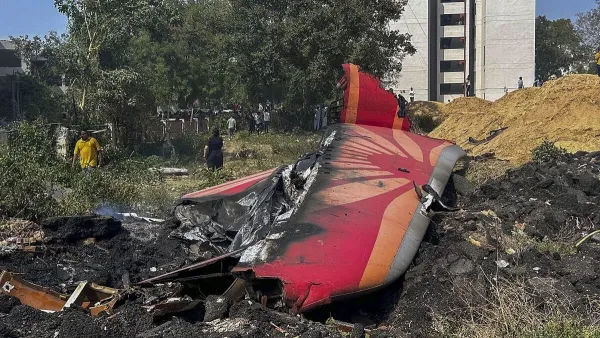Officials said that the mortal remains of the victim will be handed over to the family on Saturday. The death toll from the plane crash now stands at 260.
The deceased has been identified as Anil Lalji Khimani, a resident of Dahinsara village in Bhuj, Kutch district. Meanwhile, the Khimani family had already performed the symbolic last rites two days ago believing that he was among the passengers who were killed.
A senior official at the civil hospital confirmed that all 241 victims of the plane crash have been identified with the identification of Khimani. With this a total of 260 people are reported to have been killed that includes 241 in the plane and 19 on the ground. This is said to be the final figure of the tragedy.
Khimani, 32, was traveling to London on June 12 when Air India AI-171 flight, a Dreamliner aircraft by Boeing, crashed into the BJ Medical College hostel and canteen buildings seconds after taking off from Sardar Vallabhbhai Patel International Airport.
The authorities have collected 318 bodies and body parts from the crash site and were sent for DNA matching. The state government has hailed the quick identification of victims through DNA testing. The government said that until a couple of decades ago, it would have taken five to ten days to establish identities but due to state-of-art-infrastructure, the FLS teams were able to start identifying in "record-breaking time of less than 72 hours".
Director of Forensic Science, HP Sanghvi, said in a statement released by the state government,"...this incident was not just another "case" for FSL, but a matter of hope and emotion for countless families. That's why all FSL teams from Gandhinagar, Ahmedabad, Vadodara, Surat, and Rajkot were immediately mobilized to Gandhinagar to expedite the DNA profiling process and ensure the swift handover of the victims' bodies to their families."
Officials said that due to complexity involved in testing DNA samples collected from unrecognizable remains, every sample was carefully brought to the FSL laboratory in Gandhinagar. And, the process of collecting DNA samples from victims' relatives and profiling was started at the civil hospital.
Sanghvi explained that primarily, there are two methods of obtaining DNA samples- from fresh blood, which is not a complex process and collecting samples from the remains of the deceased, which is more complex and requires greater precision. He said that during the DNA isolation and extraction process, if the sample includes a bone, it is grounded into powder.
Stating that the entire process is highly complex and time-consuming, Sanghvi said, "If the sample includes a tooth, it is broken into small pieces and then powdered. The powdered sample is then subjected to a precise temperature in a special machine to isolate the DNA.
"The quantity and quality of this isolated DNA is then checked using an RT-PCR machine. If the DNA meets the required standards, multiple copies are prepared. Both strains of the DNA are separated, and the strains are then run through a sequencer machine to obtain the DNA profile."
He also said that even after going through the entire process, if sufficient numbers of DNA alleles are not obtained, the entire procedure has to be repeated. "The obtained DNA alleles are then compared with the DNA alleles of the deceased's family members. Only when 23 DNA alleles match, the identity of the deceased and the relative is confirmed. In cases involving a father-son relationship, Y chromosome testing is conducted for confirmation.
